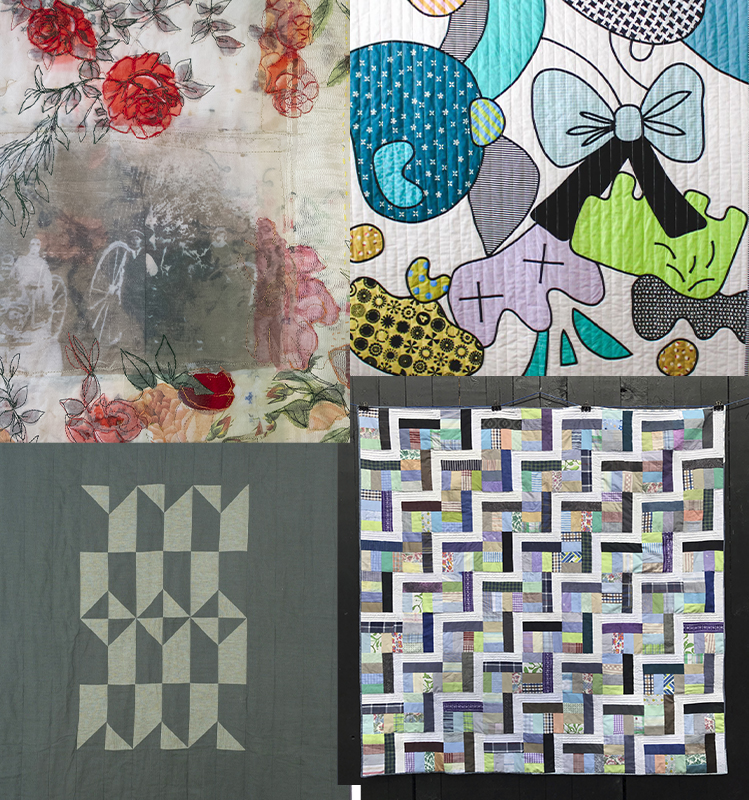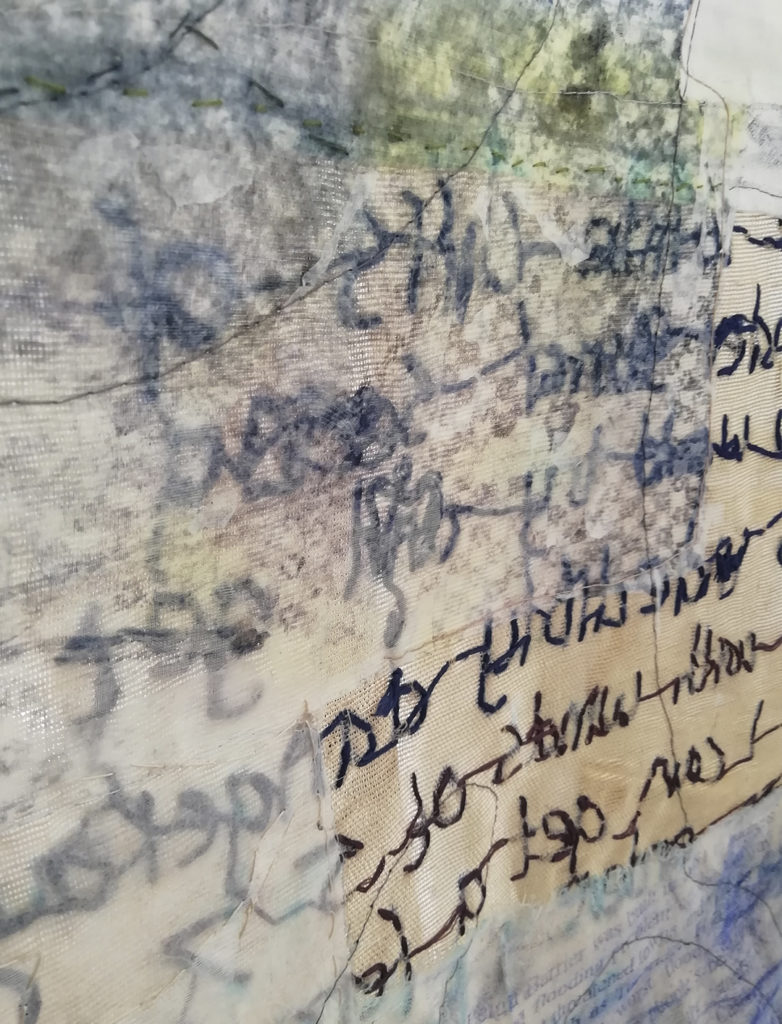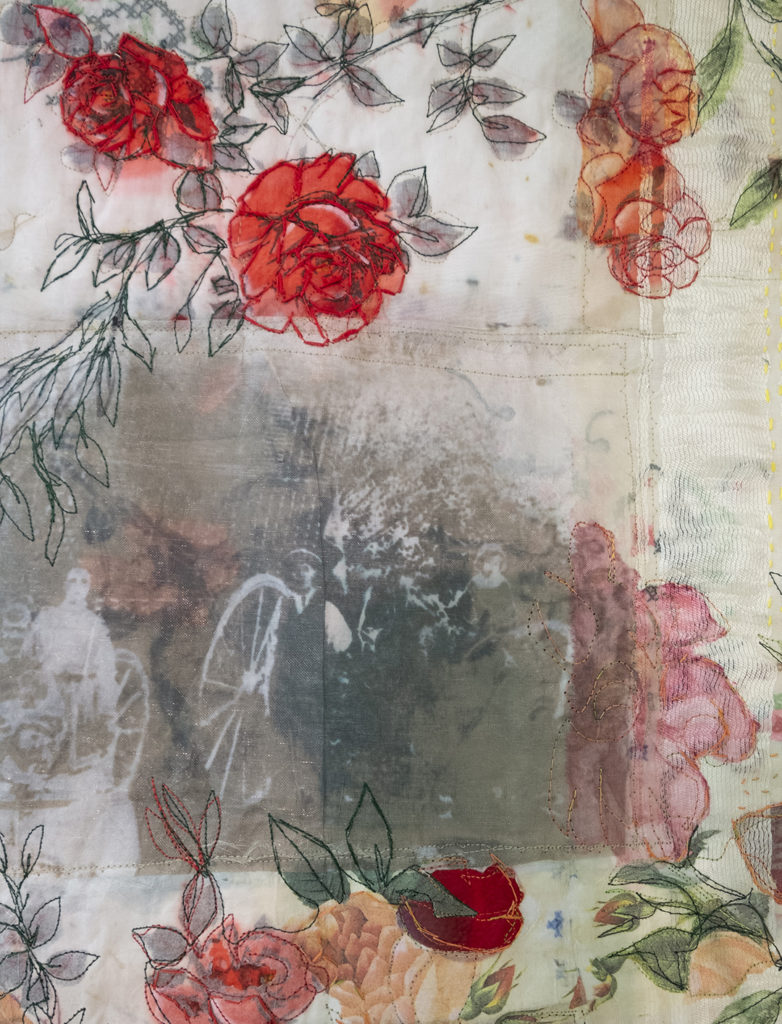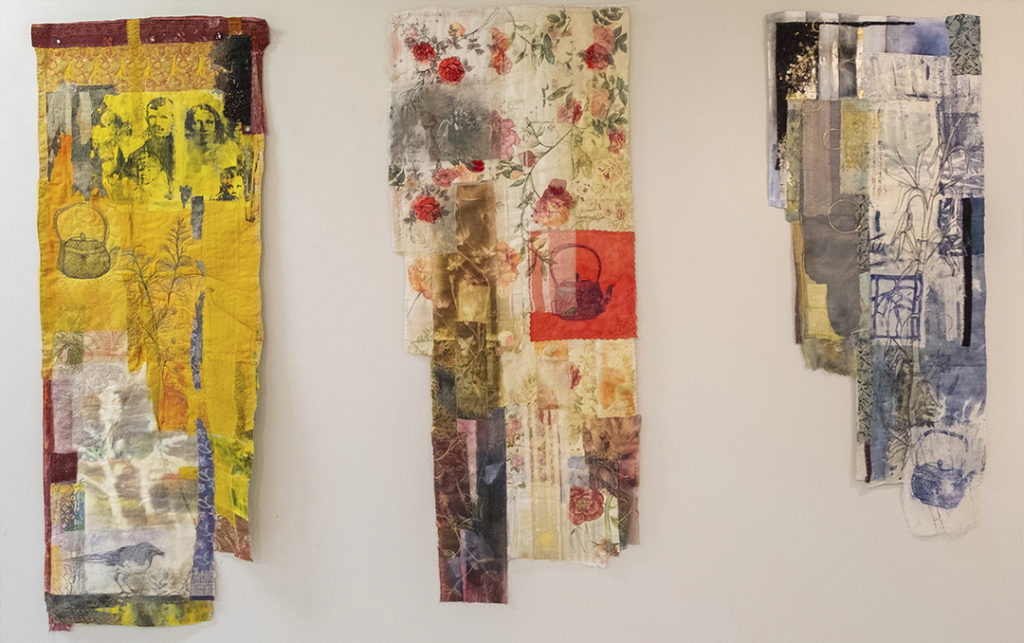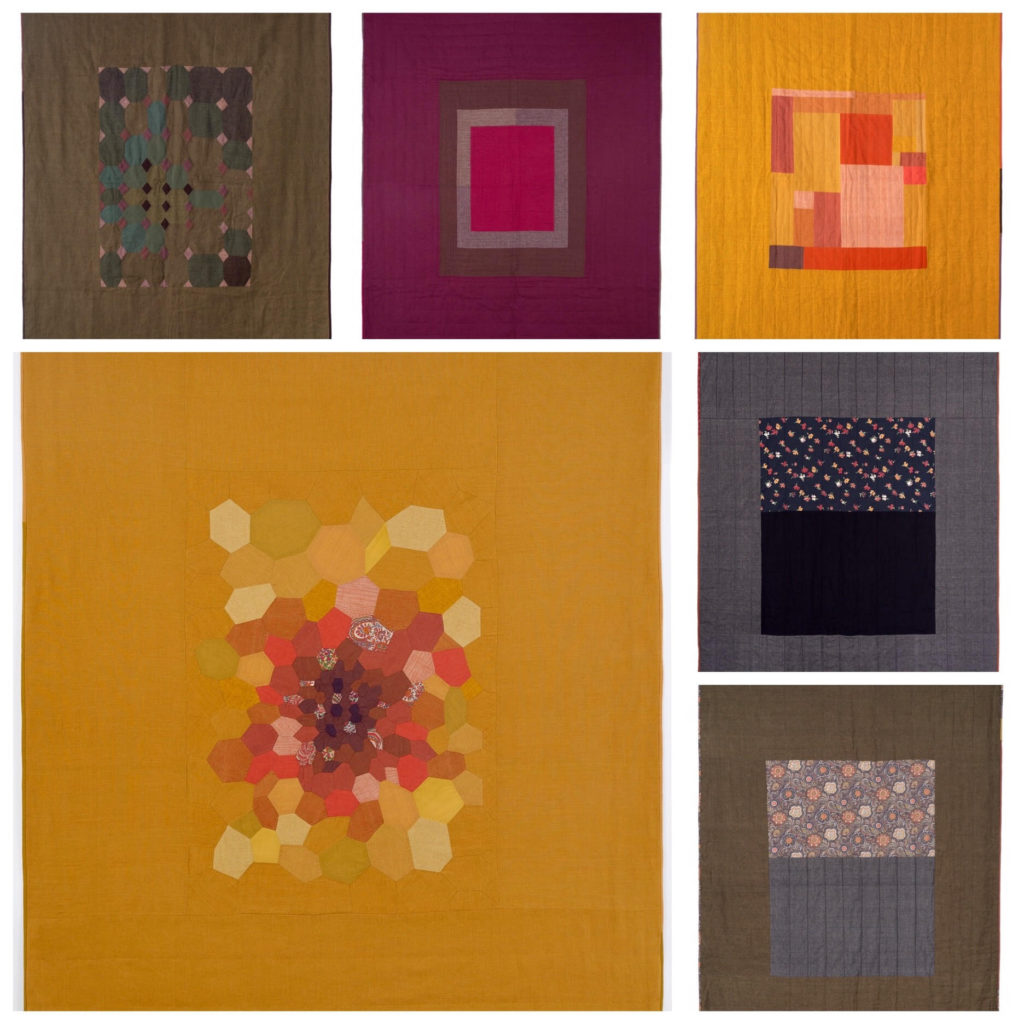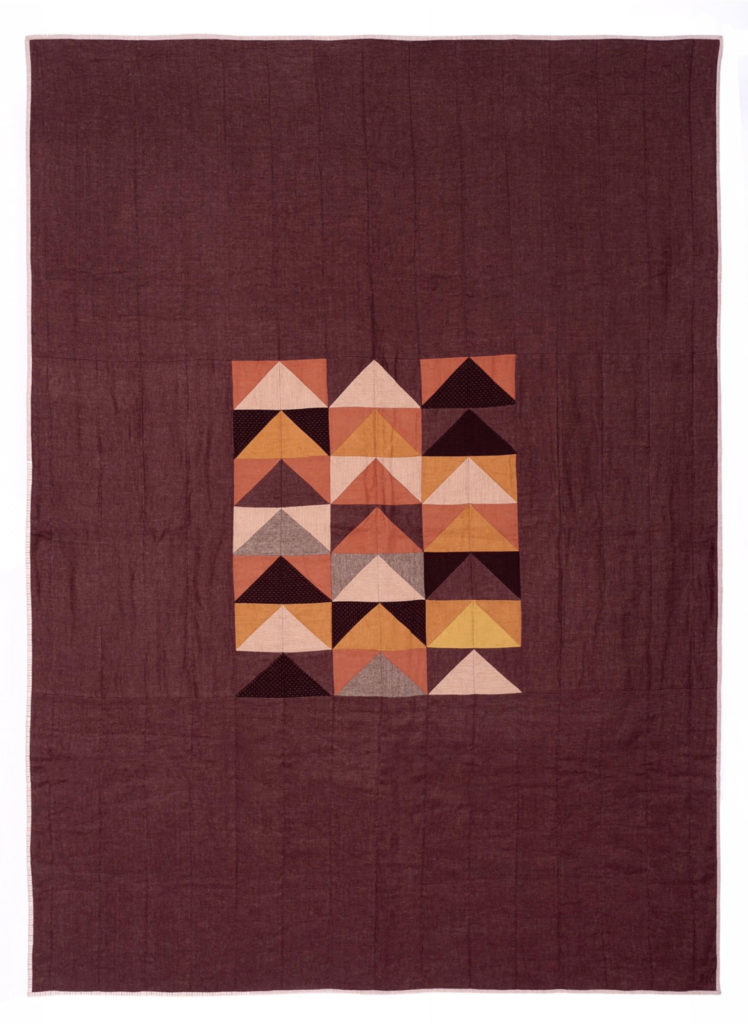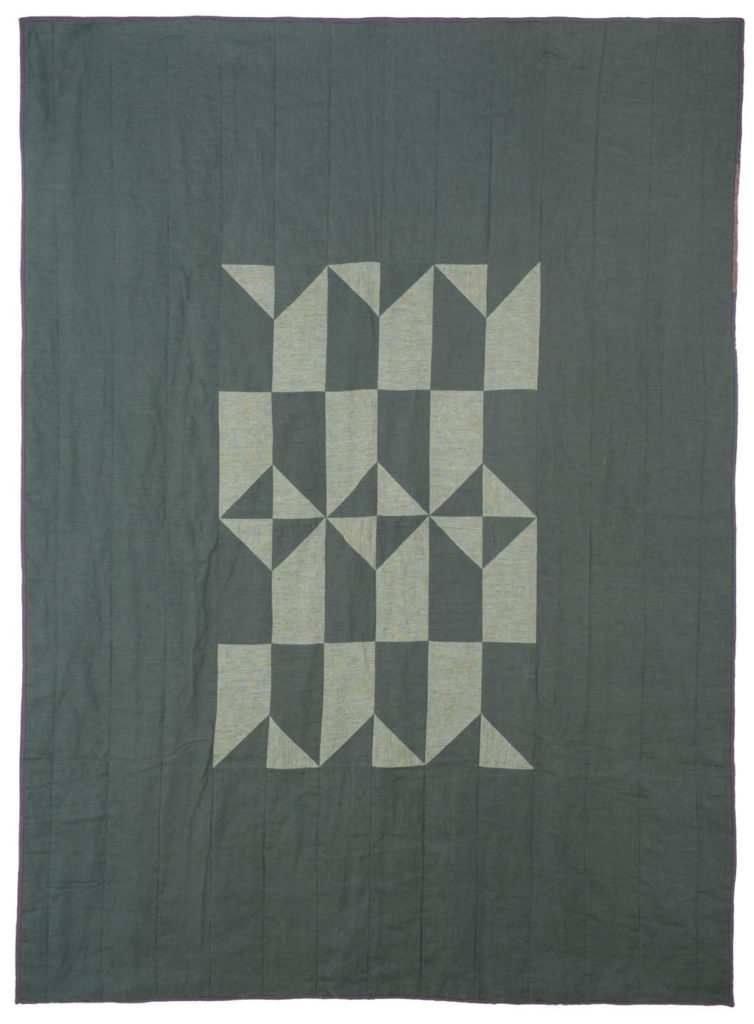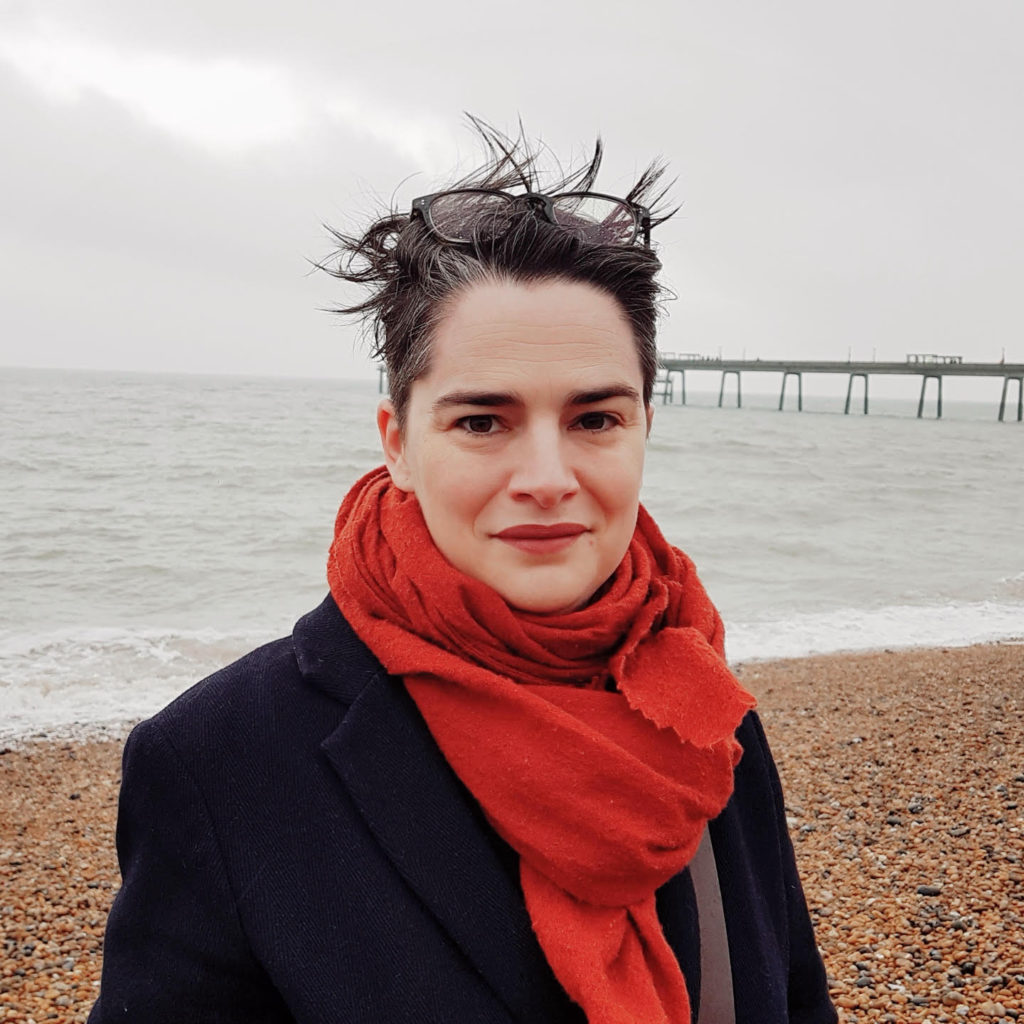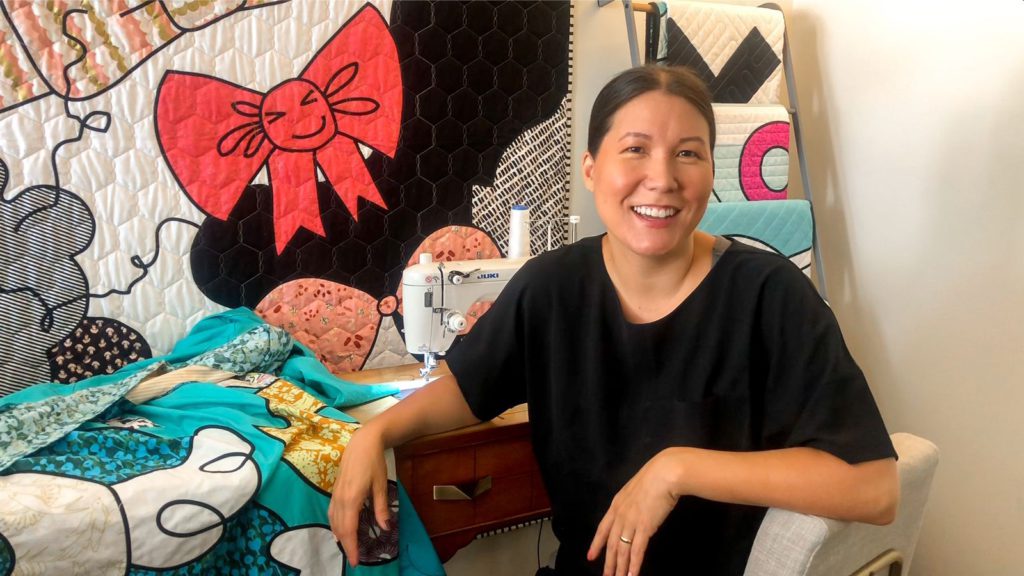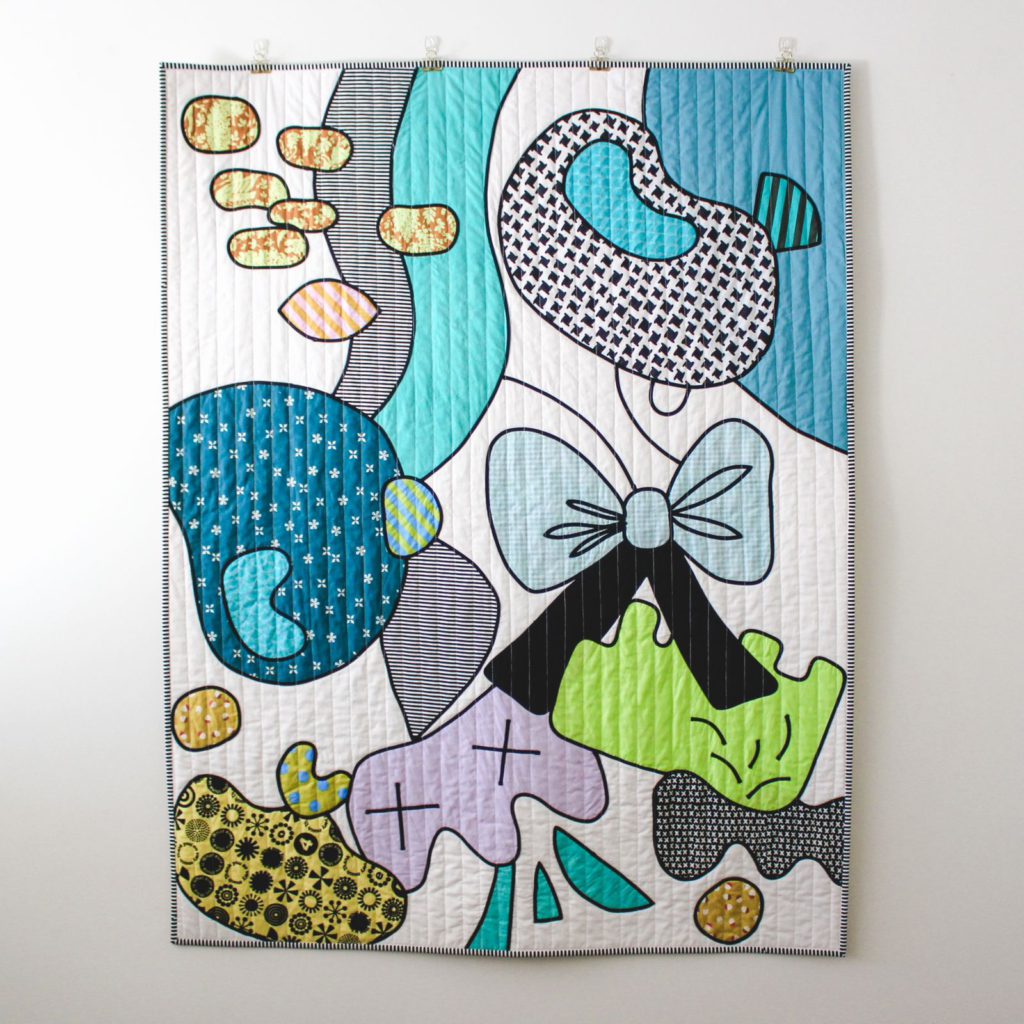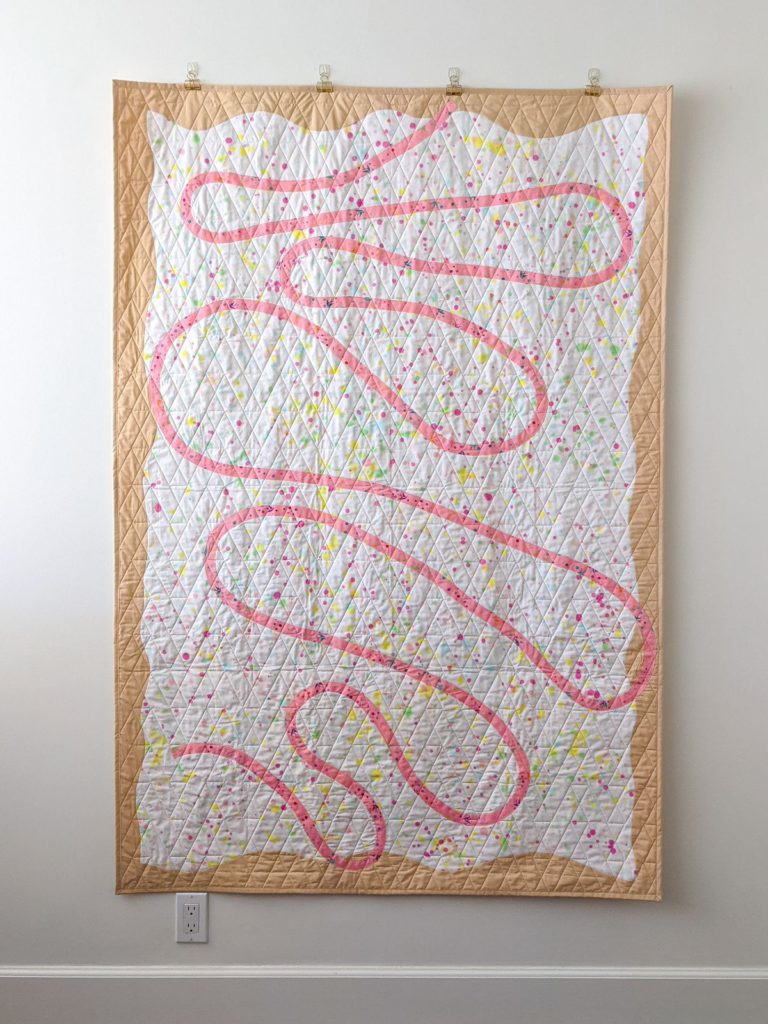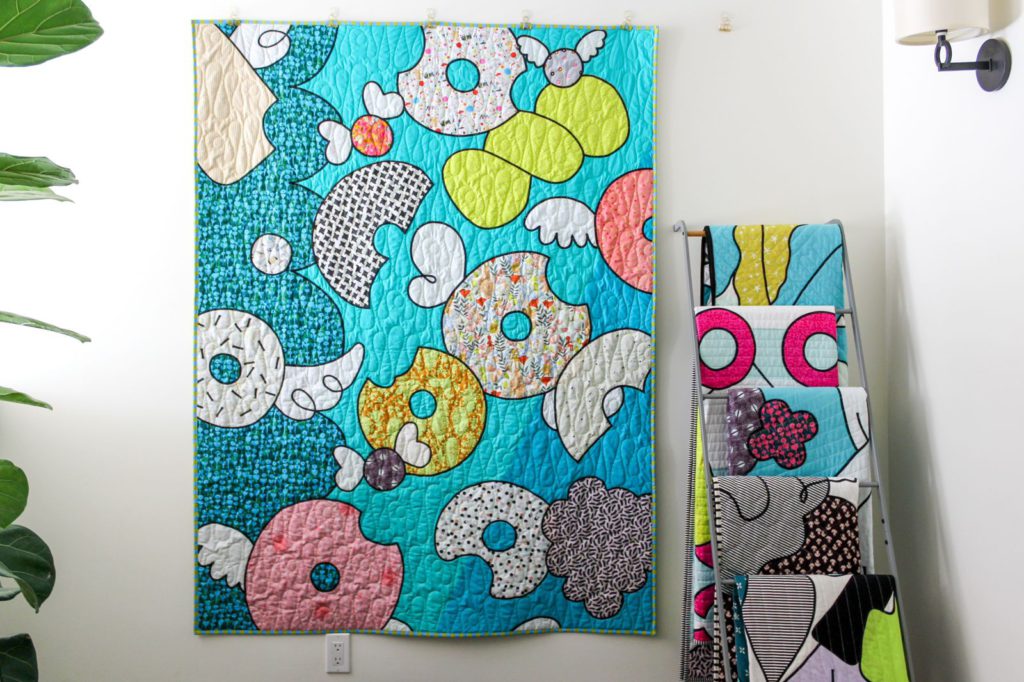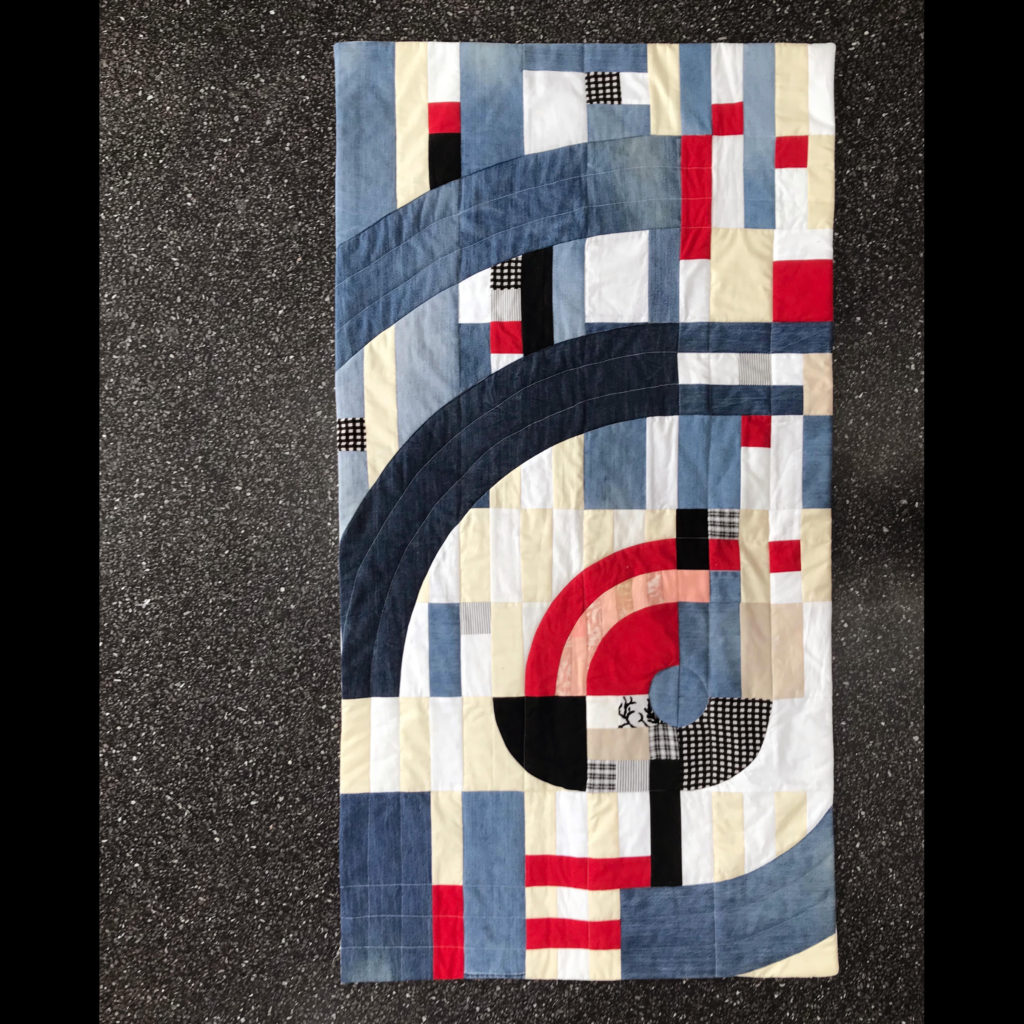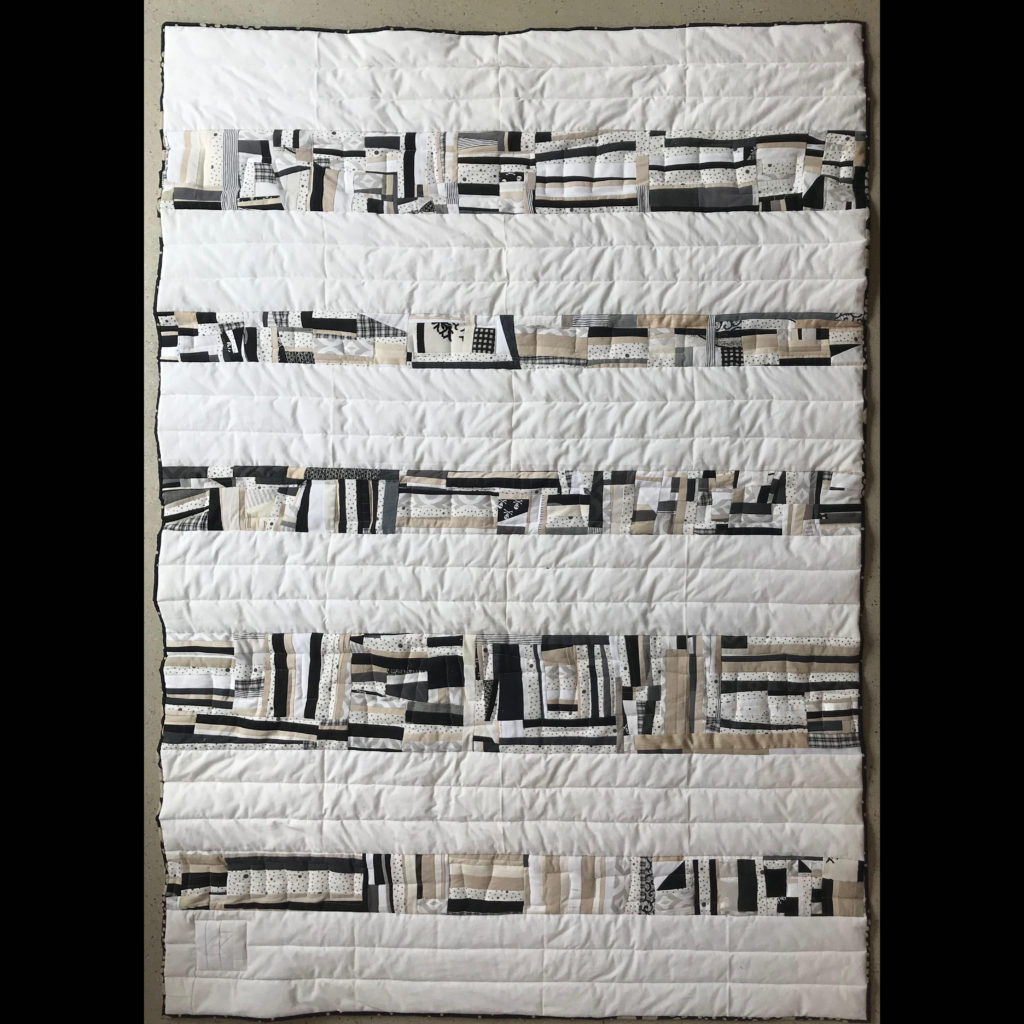In this new showcase I’m featuring four Modern Quilters that you will love!
Cas Holmes
Cas Holmes is an award winning artist of Romani descent based in Kent. She graduated in Fine Arts from University College of Creative Arts, followed by research into paper-making and textiles in Japan (supported by the Churchill Fellowship and the Japan Foundation)
Renowned for her use of ‘the found’, she is the author of five books* for Batsford, including her most recent Embroidering the Everyday: Found Stitch Paint which takes an eclectic view on how different places, everyday subjects and the landscape we live in, can inform your textile work
Her work combines paint dye, layer and stitch with discarded cloth, paper and found materials to create unique surfaces. The rituals of drawing and making mark the passing of time. The history and familiarity of the worn cotton, linen and paper surfaces inform the narratives contained within layers of cloth held together with machine and hand stitch
Interested in the connections between land, place and environment, the stories and imagery to be found in collected materials and everyday observations are a constant source of inspiration for projects and collaborations with different organisations and charities across the globe. She also teaches at the prestigious West Dean College where she was also resident artist.
More recently, Cas worked on a specially commissioned exhibition Gypsy Maker 4 supported by the Romani Cultural and Arts Company which toured physically and virtually. Cas is currently working on a new project, Places, Spaces, Traces reflecting the notion of ‘Identity’ and ‘Place’ part of which is being exhibited in the UK before the full exhibition travels to Sint-Anna-ten-Drieën Antwerp in 2022 through the organisation vzw ANNA3
Her many-layered, atmospheric pieces are collected and commissioned internationally including pieces held by the Museum of Art and Design New York, the Embroiderer’s Guild UK and the Garden Museum, London.
Catherine-Marie Longtin
I was born in Montreal and started sewing table linens and duvet covers as a teenager, mostly because I couldn’t find what I wanted in shops. While I loved all things textile, I loved school too and completed a B.A. and M.A. in Linguistics and a Ph.D. in Cognitive Science. My academic career took me from Montreal to Paris, Lyon, and Cambridge (UK) until I found myself at a crossroad and decided to go back to my passion for textiles and art. I learned quilting basics during an evening course at Morley College (London), then explored further techniques and styles using books and web resources.
I now make quilts in my South East London studio, near my home where I live with my British husband and two children. I sell my work online or via open studios events and textile fairs. I also do a lot of commission work, often with pieces of fabric that have a special meaning for the client.
Central to my work is the influence of abstract artists such as Josef and Anni Albers, Mark Rothko, Agnes Martin, Paul Klee and Nicolas de Staël, but also of quilters who have pushed traditional boundaries to create deeply personal visions of what a quilt can be, like the Gee’s Bend and Bosna Quilts collectives.
I design my quilts in full size on a wall like oversized collages, using an extensive palette of fabrics that I have collected over the years. I am particularly fond of medallion quilts, where a patchwork composition is surrounded by a wide frame of solid fabric. When I choose solid fabrics, I tend to go for the ones that have texture and depths, like shot cottons andlinens. I also love working with prints but use them sparingly in order to really showcase the designer’s artwork. Liberty of London Tana lawns are a long time favourite. I love colour, but tend to use it in a quiet, muted way. More recently, I have slowed down my practice to explore the possibilities offered by hand stitching, in particular by using the traditional English paper piecing technique with freehand drawings. While time consuming, it has opened up a world of possibilities in terms of design and has proved particularly healing in the tumultuous past years.
Emily Watts
My kind neighbor, Judith, invited me to her house one day in 2018 to learn some traditional quilting techniques. When I arrived, she had hot tea brewing and a whole quilting classroom set up in her kitchen! I’d barely used a sewing machine before, so she had to start at the very beginning! She sent me home with an acrylic ruler and some quilting books, and told me to go for it–and to remember that no one will notice your mistakes. When I started designing my own modern quilts, I wasn’t sure what Judith might think of my digression from traditional blocks. But she’s been the biggest fan of my original designs and always encourages me to push it even further.
I’m inspired by street art, animation, kawaii illustrations, and bold graphic fabric prints. If I can’t decide where to go next with a design, I look around and cut out the shape of anything I see. Maybe it’s a shape from a fabric print in my stash. Maybe it’s a houseplant or some jellybeans my daughter dropped on the floor or a cat that walks by outside. I just want to experience the flow of creating, to stop over-thinking things (like I do in the rest of my life!) and let quilting become a meditative process that brings me energy and relaxation.
Karen Ehlers
I started quilting 5 years ago when someone in the family came up with the idea to make a quilt as a wedding gift to my brother and his wife. It consisted of individual strips that were made by the members of the family and my sister and I put it all together. We got through with the help of lots of YouTube videos – and I was hooked.
As an architect and now retired university teacher geometric patterns and graphic compositions appeal to me. I also enjoy making things and all that comes together nicely in quilting.
I love using repurposed fabric that I get from deconstructing garments which I cut up in strips or squares and from old bedsheets. My design concepts mostly arise either from specific fabrics that are given to me by friends (They know they’re not to throw anything away before I have checked it out) or the challenge to use up all the strips that I have accumulated at a given time.
In Germany there is not a solid quilting tradition as for instance in the US. I don’t know anybody who quilts personally so I’m quite thankful for the online community and the information and exchange it provides.


